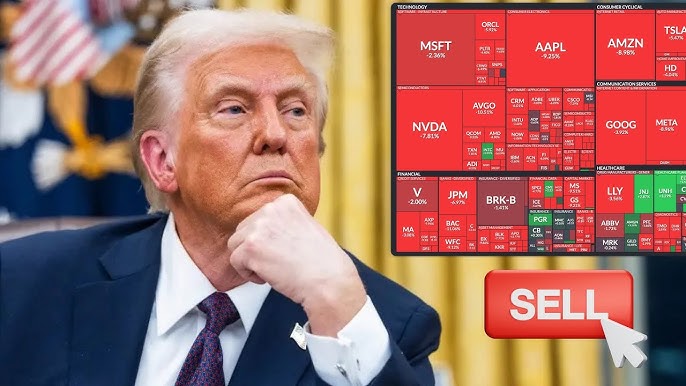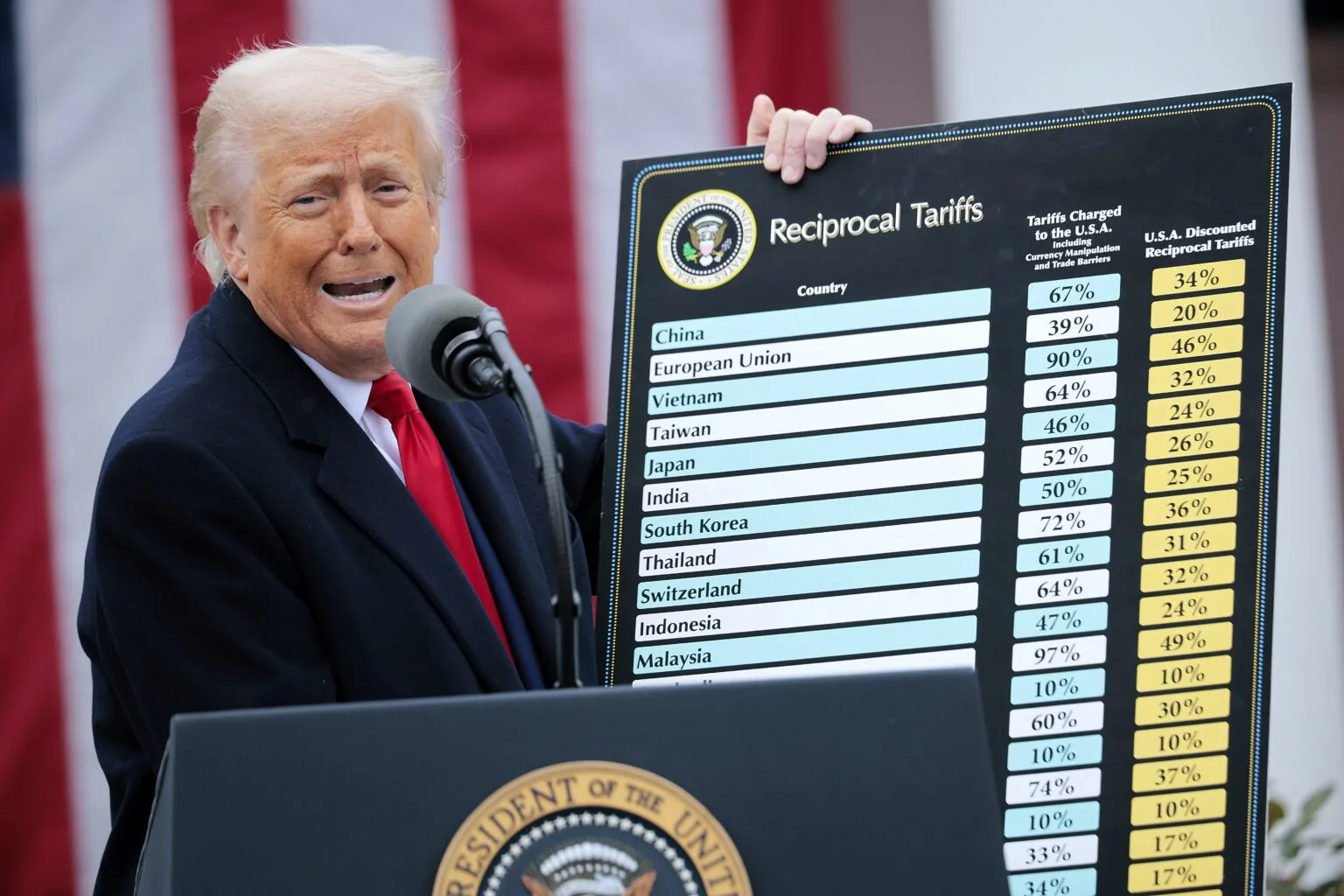How Trump’s Tariffs Shook the Stock Markets
Overview
In 2017, incoming President Donald Trump said he was going to make America first. Among the most discussed instruments that he employed to accomplish that was tariffs, particularly on production imported into the country by China and other trading partners.
The impact of these tariffs did not only concern international trade. They shuddered the stock markets with waves of instability, investor panic and a few unexpected profits as they went.
Let me explain it in layman terms, what occurred, how the markets responded and how this affects investors today.
What Are Tariffs, Anyway?
Simply said, tariffs consist of imported products taxation. The goal? As a way of increasing the cost of foreign products in order to allow individuals and companies to purchase American produced counterparts.
To take an example, when the U.S. rims a tariff of 25 per cent on Chinese steel, the Chinese steel becomes high priced. The American steel manufacturers can then compete easily.
This is great news to local producers, isn’t it? Well yes and no. As a matter of fact, tariffs usually cause ripples, particularly when other nations counter with their tariff barriers.
Trump’s Trade Wars Begin
Trump began a great trade war with China in 2018. It started with steel and aluminum tariffs and soon thereafter it was slapped on hundreds of billions of dollars worth of Chinese products.
The major ones are:
- March 2018: 25 percent tariffs on steel and 10 percent on aluminum imported to various countries.
- July 2018: Preliminary duties on importation of Chinese goods worth 34 billion dollars.
- September 2018: Chinese goods taxed once more to the extent of $200 billion.
- 2019/2020: hostilities increased, followed by the easing of a trade agreement to Phase One.
Every communication reflected a direct and visible effect on the wall street.

Market Reactions
The stock market dislikes ambiguity, and Trump was renowned to announce his tariffs with the help of tweets or sudden press conferences. Investors made an emergency attempt to readjust.
Sudden Drops
- The markets would usually go down when Trump would announce new tariffs without prior warning. Large caps such as the S&P 500 and the Dow Jones Industrial average would drop, in some instances, less than several hours.
For example:
- In May 2019, Trump tweeted that he would increase tariffs on Chinese products to $200 billion. The following day, Dow had dropped by more than 600 points.
In August 2019, China hit back with tariffs. Trump struck back and the market had one of the most dismal days of the year.
Relief Rallies
Markets do not only crash, but also recover when tensions are not so high. When Trump tweeted anything positive, such as, China was willing to make a deal, share prices were prone to soar.
Which Stocks Were Hit the Hardest?
Some sectors got slammed more than others. Here’s who felt the heat:
Technology
In their global supply chains, tech firms tend to utilize China. When iPhones were produced in China and sold to the world, Apple, as an example, was exposed to huge risks.
The mention of any tariff whatsoever on electronics or computer components took tech stocks down.
Agriculture
China retaliated against U.S. tariffs by reducing U.S soybeans and pork. That killed off farmers and the manufacturers of agriculture equipment such as John Deere, whose share prices declined on weak demand.
Automobiles
Auto makers such as Ford and General Motors were forced to footprints on higher priced imported steel and aluminum. Besides, investors turned jittery after thinking about European tariffs.
And Who Benefited?
Indeed, there are some stocks that rose in the tariff wars.
U.S. Steel and Aluminum manufacturers
Early beneficiaries were companies such as the U.S. Steel and Alcoa. The foreign metals were now very expensive and thus suddenly they were more competitive.
Oddly Enough, Some Retailers
Some of the discount retail ventures made inroads as strange as it may sound. Why? Since the consumers wanted to find alternatives to cheaper ones when the prices increased as a result of tariffs.
Consider stores such as Dollar Tree or Walmart, which started serving as one of the first to visit when people needed to buy something cheaply.

Investor Sentiment
During the tariff wars, investors were always in wait-and-see situations. The approach developed by the Trump administration was unpredictable, and this uncertainty tended to result in:
- Rough trading days
- Reduced investor confidence
- Sluggishness in business expenditure
In short: The markets loathed the guessing game.
The Role of the Fed
U.S. Federal Reserve was not an easy position to hold either during the tariff wars. With a tension in trade, emerging signs of decreased economic activity were seen.
To this, the Fed:
- Three times reduced the interest rates in 2019.
- It invoked trade tension and lack of global growth as a key issue.
By cutting these rates, the Administration abated the sting on markets but these rate reductions were indications that there could be actually painful economic suffering in the tariff war.
Phase One Deal
The U.S and China signed the Phase One trade deal in January 2020. China committed to purchase additional American products and the U.S. lifted part of the tariffs.
News of this was hailed in the markets:
- Strong upward performance in large scale indexes
- Investor confidence is restored
However one month later the COVID-19 pandemic struck and tariffs were soon forgotten.
Did Trump’s Tariffs Work?
This is still a topic of debate. Here’s what we know:
Pros:
- Highlighted unjust trading (particularly with China)
- Increased short-term performance of selected domestic industries
- Assisted to re-negotiate trade agreements such as USMCA (which replaced NAFTA)
Cons:
- Brought volatility and fear in the market
- Higher expenditure on the American businesses and consumers
- Stimulated retribution tariffs that damaged the farmers and exporters
From a market perspective, tariffs introduce a lot of noise and risk and investors don’t like either.
What We Can Learn From It All
The Trump tariff saga offers valuable lessons for both casual and serious investors:
- There is contempt among markets against surprises Particularly shifts in policies that impact international trade.
- Diversification counts Sectors respond in different ways. The technology may decrease and the raw materials may increase.
- Markets are susceptible to politics Tweets, press conferences and diplomatic squabbles all have the potential to affect your portfolio.
Final Thoughts
You might have agreed with Trump on trade policies or not, but there is one thing you must also agree on Tariffs and the Stock market do not work together like yin and yang. The investors found themselves in the vortex of incertitude, knee-jerk actions, and shock rallies. It was a lesson that the markets are not just a matter of figures and graphs; they were about trust, transparency and correspondence.
And the day when a world leader comes in and he talks about tariffs then you can imagine that the attention given by Wall Street may be extremely close.






